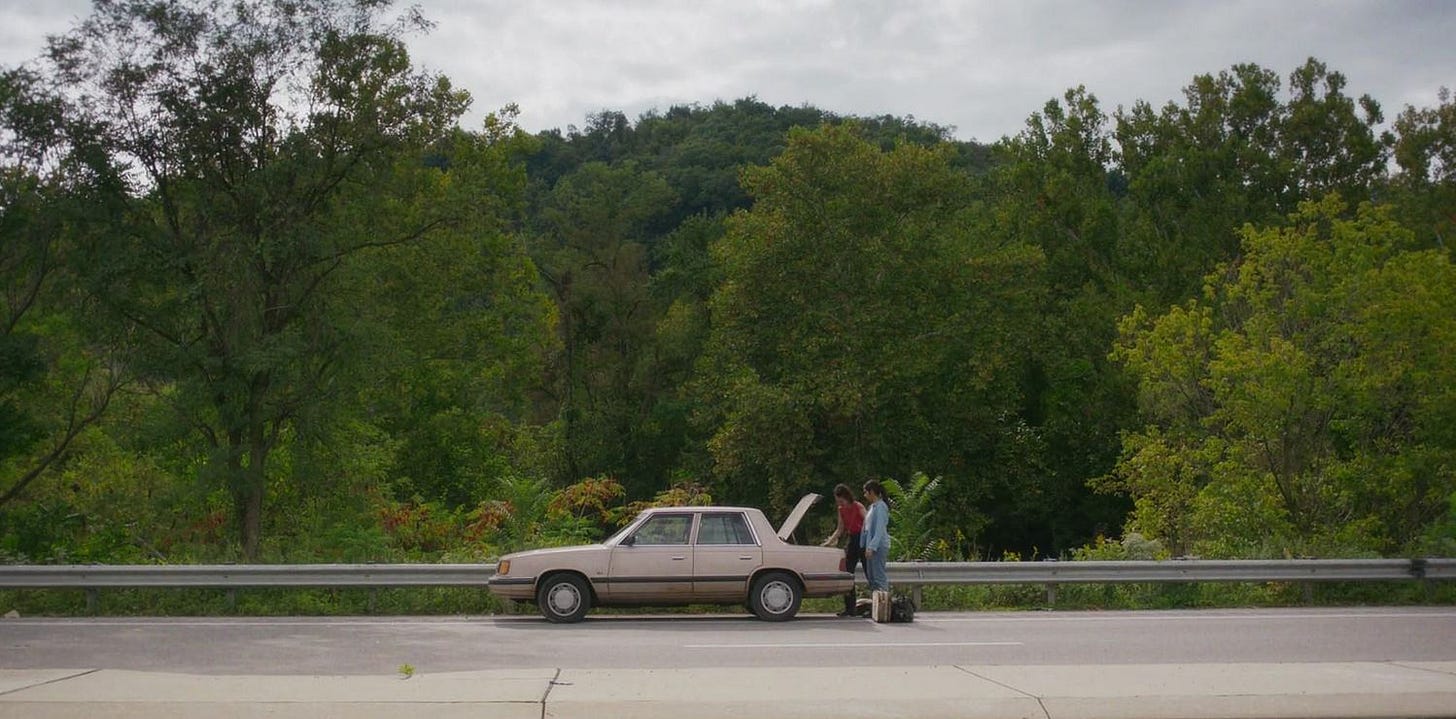C&C 37: The Vincent Summit, Scored by Burt Bacharach
Plus a lesbian pulp double-bill, not scored by Burt Bacharach
A momentous meeting last weekend, as a high-level Substack summit was convened by Ethan Iverson. In Ethan’s and Rosemarie’s company, I got to sit down with Vinnie Sperrazza, the gifted jazz drummer and fellow charter member of the Hollywood Homicide fan club. If you aren’t regular readers of Ethan’s Transitional Technology and Vinnie’s Chronicles, I suggest you remedy that pronto.
Prompting this fab confab was a three-night Seattle run of The Look of Love, a show by the Mark Morris Dance Group built around the songs of Burt Bacharach and Hal David as arranged by Ethan, who also plays piano. Vinnie handles the drumming duties. It’s an extraordinary piece, kicking off with Ethan’s haunting rendition of “Alfie.” When I first heard about the show, I was certain there was no way Ethan could incorporate Bacharach’s theme song to The Blob (1958), with lyrics by Hal’s big brother Mack David. Silly me; I should have known better. Lead vocalist Marcy Harriell knows her way around these supreme songs of heartbreak, Exhibit A being her incendiary version of “Anyone Who Had a Heart.” And the choreography on numbers like “Walk On By” matches the signature sprightly sadness that runs through the Bacharach/David songbook.
Ethan, Vinnie, and company will be performing The Look of Love at BAM in New York City this week.
What I’m Watching
With two sapphic crime films in simultaneous circulation, you’d better believe I’m watching them both the same weekend Barbenheimer-style.
Love Lies Bleeding is tellingly set in 1989, and for much of its running time plays like a grimy throwback to the low-budget thrillers that proliferated during the early home video era. Its premise harks back even further, to the work of James M. Cain: a stranger rolls into town and turns the burg upside down, unleashing torrents of sexual tension. Lou (Kristen Stewart) manages a gym for her old man—one of his few legitimate businesses—and instantly falls for new customer Jackie (Katy O’Brian). Their intense affair veers into homicide, bodybuilding, and exotic insects. Cowriter/director Rose Glass experiments with a range of tones, with swooning romanticism, graphic violence, and deadpan comedy jostling elbows, sometimes in the same scene. And the movie takes some big swings late. For those reasons alone, I’m not likely to forget it, and the lead performances by Stewart and O’Brian are first-rate.
A straight-up noir, Love Lies Bleeding isn’t fooling around. Whereas Drive-Away Dolls is purely fooling around, and having fun while doing so. It’s also in complete control of its tone, which makes sense given that Ethan Coen, making his first fiction feature without brother Joel, essentially invented it: crackpot crime. Dolls is actively goofy, more akin to Crimewave (1985), which the Coens cowrote with its director Sam Raimi, than, say, Raising Arizona (1987). Two friends, the spitfire Jamie (Margaret Qualley) and the buttoned-down Marian (Geraldine Viswanathan), road-trip from Philadelphia to Tallahassee in a car they’re meant to deliver. Only they’re given the wrong vehicle, the extras stowed in the trunk embroiling them in madcap mayhem with the likes of Colman Domingo, Pedro Pascal, and Matt Damon. It’s impossible to take seriously and easy to enjoy. Ethan Coen wrote the script with his wife Tricia Cooke; this brief New Yorker feature offers some insights into their unconventional marriage. If, like me, you regard the Coens as the premier cinematic artists of their generation, it’s fascinating to watch the brothers’ solo projects—Dolls and Joel’s The Tragedy of Macbeth (2021)—and attempt to discern, Lennon-and-McCartney style, what each sibling contributed to their joint efforts. It’s already obvious that Ethan is the silly one.
Dolls is also a period piece, set in 1999, which allows Jamie and Marian’s car to be a Dodge Aries. Hardly a landmark piece of Detroit steel. But a Dodge Aries was the first (and only) car I ever owned. It had a silver exterior that I touched up with spray paint, and a maroon interior that smelled like rancid marshmallows and sagged in the Florida heat; the overall effect was like tooling around in a decaying New Orleans cathouse. That car may have prejudiced me in the movie’s favor.
Elsewhere, Anselm (2023) is now streaming exclusively on the Criterion Channel, but see it in a theater if possible. The latest documentary from Wim Wenders isn’t full of the usual talking heads. It consists mainly of footage of painter and sculptor Anselm Kiefer literally whistling while he works, sometimes with fire and molten metal, ever-present cigar in hand. This material is punctuated with vintage interviews and the occasional recreation, plus long, appreciative shots of Kiefer’s art in the wild. The theatrical version is in 3D. Wenders’ 2011 Pina, about the choreographer Pina Bausch, remains my favorite use of the technology as that film is about the movement of human bodies in very specific spaces. Here, Wenders deploys it to convey the texture and scale of Kiefer’s artwork. The documentary takes its time, slowly casting a spell.
What I’m Reading
Like Dan Barry, I’m a first-generation Irish American and a classic movie fan. (As if the Renee Patrick books don’t make both facts abundantly clear.) So I loved his St. Patrick’s Day-timed look at the now largely-lost film The Callahans and the Murphys (1927). Ach, sure it’s brimming with stereotypes.
“It’s a silent fire.” For the Hollywood Reporter, Gary Baum and Carolyn Giardina on the perils of preserving digital media.
I so enjoyed David Marchese’s exit interview from the New York Times’ “Talk” Q&As—don’t worry, Marchese’s conversations are being folded into a new feature—that I reread some of his greatest hits, like these chinwags with Nicolas Cage and Sonny Rollins.






Thanks Maestro!
I may be seeing The Look of Love on Friday at BAM. After reading your post, I'm looking forward to it.